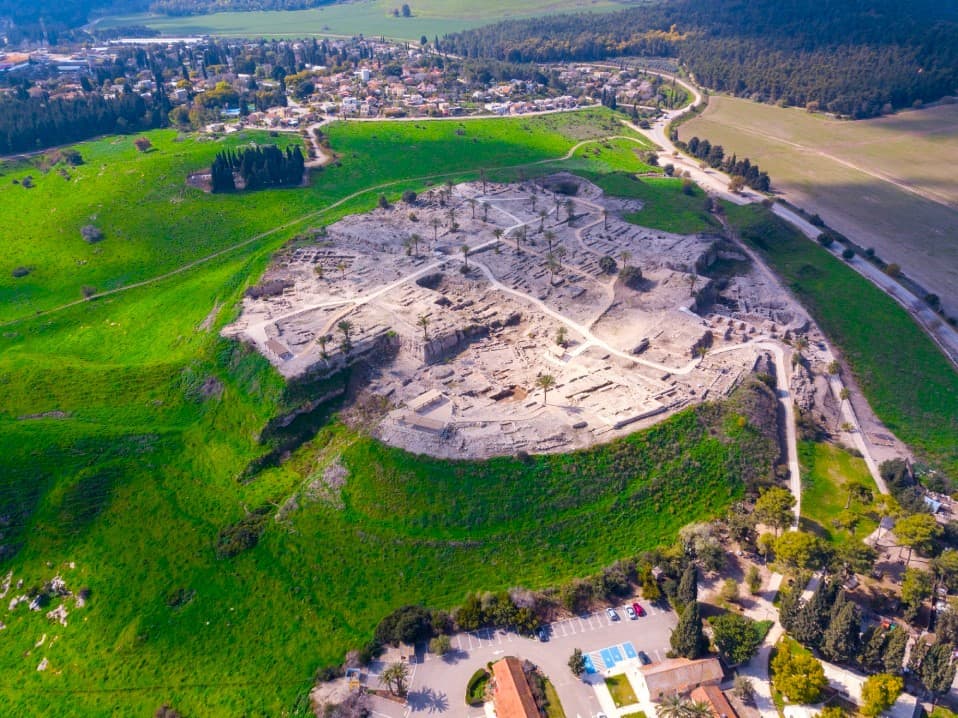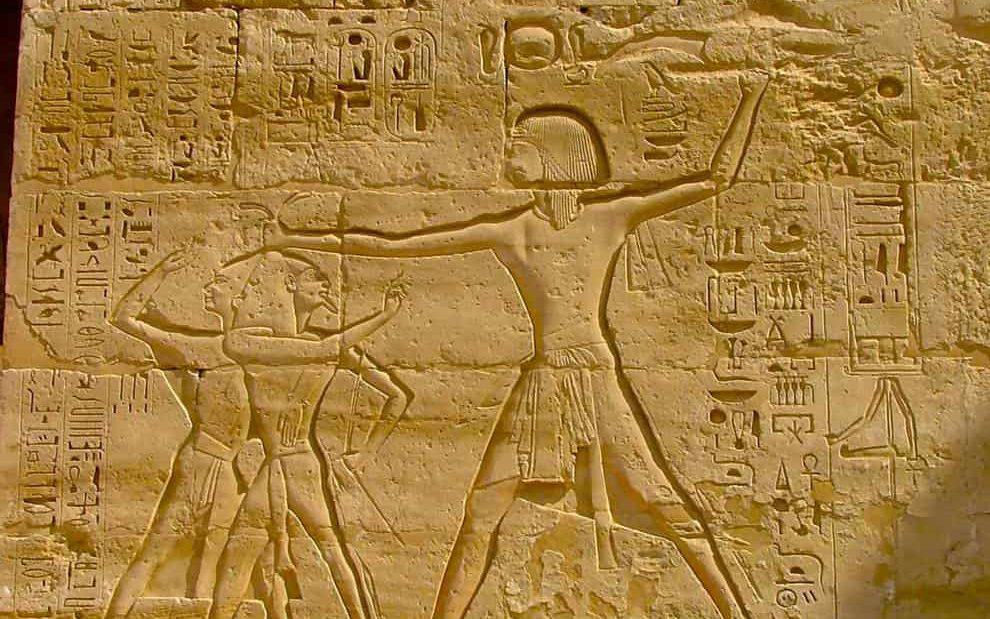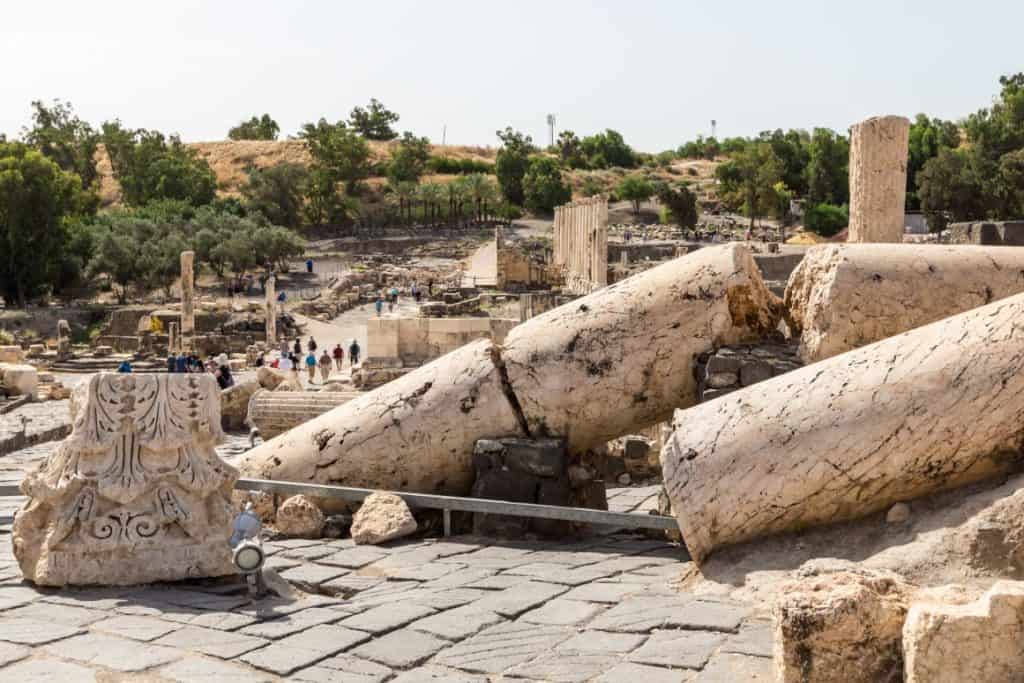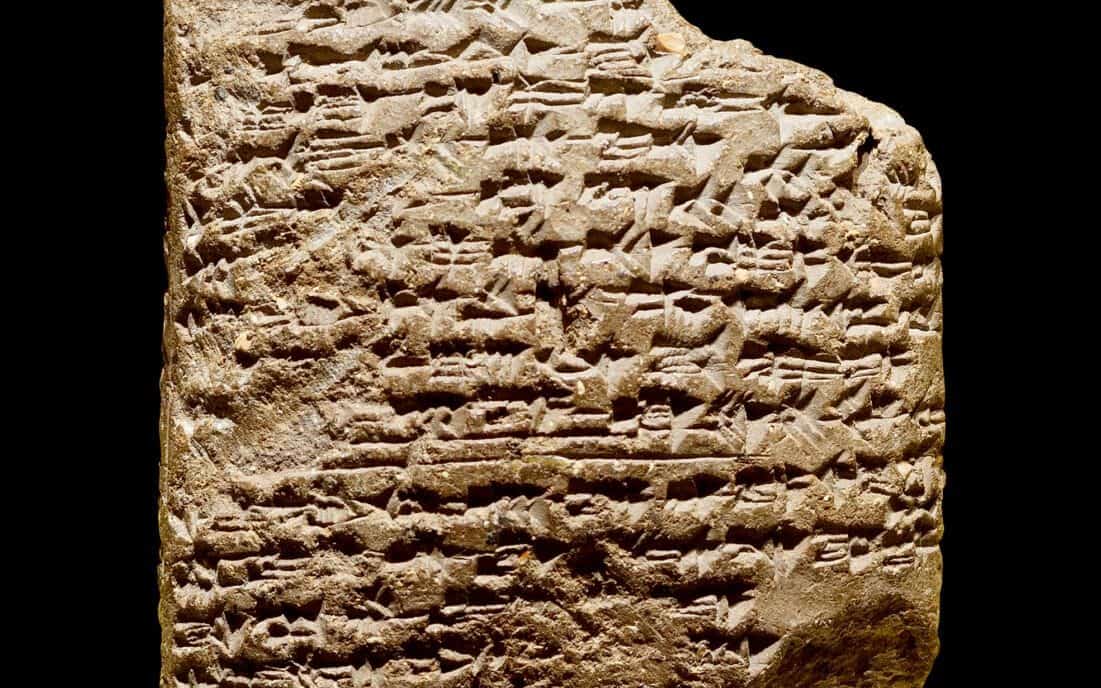This contrasts the political structure of pharaonic Egypt, which was based, ideally, on the concept of a single unified kingdom. On the other hand, the political system of Canaan revolved around individual city-states, each with its own ruler. The city-state system was established ca. 2950/2900 BCE, with the region’s urbanization in the Early Bronze Age; it continued until the end of the second millennium BCE.
Late Bronze Age Collapse
Credit: Alexikoua, CC BY-SA 3.0, via Wikimedia Commons
As in Egypt, the political system of Canaan saw periods of strength during which the urban centers flourished. But also periods of demise during which the states experienced decline and destruction. These periods’ precise terminology, characterization, and absolute chronology are not as clear as in Egypt.

The Political System in Canaan And Egypt
During periods of unity and strength, Egypt determined the nature of its relations with Canaan by its own needs. However, when Egypt’s central rule disintegrated, its border controls weakened. And, as archaeological and textual records from the First and Second Intermediate Periods indicate, large-scale infiltration of foreigners from Canaan into the eastern Delta took place.
The Empires of the Late Bronze Age

Nevertheless, pharaonic Egypt remained the major political power in the region, and Canaanites, whether in their homeland or as settlers in Egypt, continued to hold Egyptian culture in high esteem, adopting Egyptian cultural traits that they deemed prestigious. At the same time, textual and archaeological evidence also shows Canaan’s cultural influence on Egypt.

First Contacts With Canaan
Egypt’s earliest organized contacts with Canaan were associated with the importation of luxury goods sought by the rising Egyptian elite around the time of the unification of Egypt in the late fourth millennium BCE. It was at that time that cultural interaction between the two regions commenced. It gradually increased throughout the third and the second millennia BCE and varied greatly following political developments in both regions. Similarly, there were considerable differences between Egypt’s relations with southern Canaan, namely, the area of present-day Israel. And its relations with northern Canaan, the region of Lebanon, and southern Syria.
Kings and City-States: An Intricate Tapestry of Rule
Amidst the rolling hills and fertile valleys of Canaan, city-states flourished, each an independent realm under the sway of its ruler. These kings, adorned with crowns and symbols of authority, held the destinies of their domains in their hands. They presided over courts where administrative matters and the grandeur of cultural expression intertwined.
Biblical Tels in Israel

Jericho’s Telltale Kings: A Glimpse into the Past
Jericho, an ancient city stretching back millennia, provides a tantalizing glimpse into Bronze Age political dynamics. Its towering walls, mighty ramparts, and archaeological finds testify to power’s intricate interplay. As the city changed hands across centuries, it witnessed shifts in political allegiance and perhaps the rise and fall of local kings.
Trade Routes and International Relations: Diplomacy Unveiled
The Bronze Age wasn’t just an era of isolated city-states but a time when the world converged through trade networks. Canaan’s strategic location made it a crossroads for merchants and diplomats. Pharaohs in Egypt sought to extend their influence, and the Amarna Letters—a cache of diplomatic correspondence—reveal glimpses of the political chess played between kings.

From Megiddo to Hazor: Tracing Kings in the Dust of Time
The archaeological realm is a treasure trove of insights into Canaan’s political past. Megiddo’s grand palaces, Hazor’s imposing fortifications, and other sites unveil the remnants of kings’ grand visions. These architectural marvels are silent witnesses to rulers’ ambitions to etch their legacies into the stones and clay.
In Search of Power: Archaeological Endeavors
Archaeologists venture into the past armed with shovels, brushes, and a thirst for discovery. As layers of earth are peeled back, the artifacts they unearth—ivory carvings, pottery adorned with symbols of authority, and inscriptions—form puzzle pieces that fit into the broader mosaic of Bronze Age politics.
Best Tour of Tel Jericho

Unraveling the Political Canvas: A Continuing Saga
As we peer through the lens of archaeology, we catch glimpses of Canaan’s Bronze Age political tapestry. But the canvas remains incomplete, with unanswered questions fueling the fire of curiosity. Did kings wield absolute power or share authority with councils? How did city-states collaborate and contend? The quest for answers continues.
From Ancient Kings to Modern Minds: Lessons in Complexity
Bronze Age Canaan’s political landscape is a testament to the intricate nature of human society. It’s a reminder that the pursuit of power, diplomacy, and cultural exchange are timeless threads that weave through the tapestry of history. The kings of yesteryears may have faded into the sands of time, but their stories live on, echoing through archaeological discoveries and igniting the imagination of modern minds.